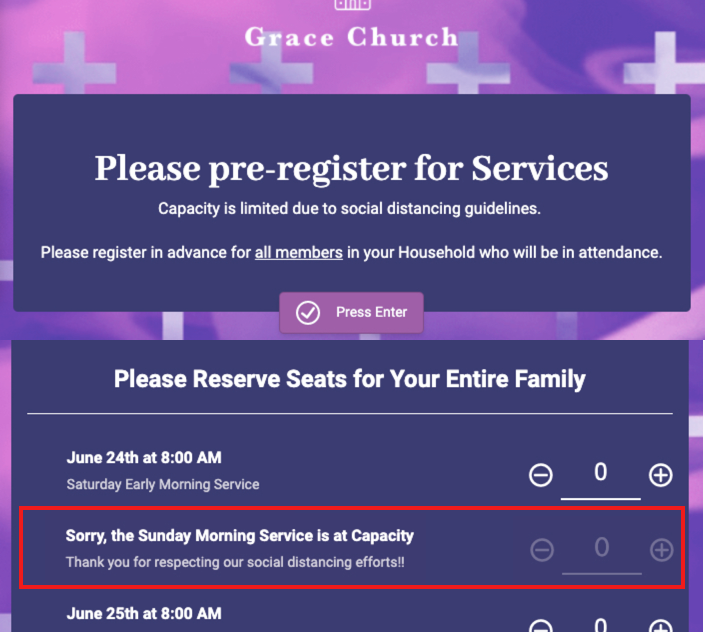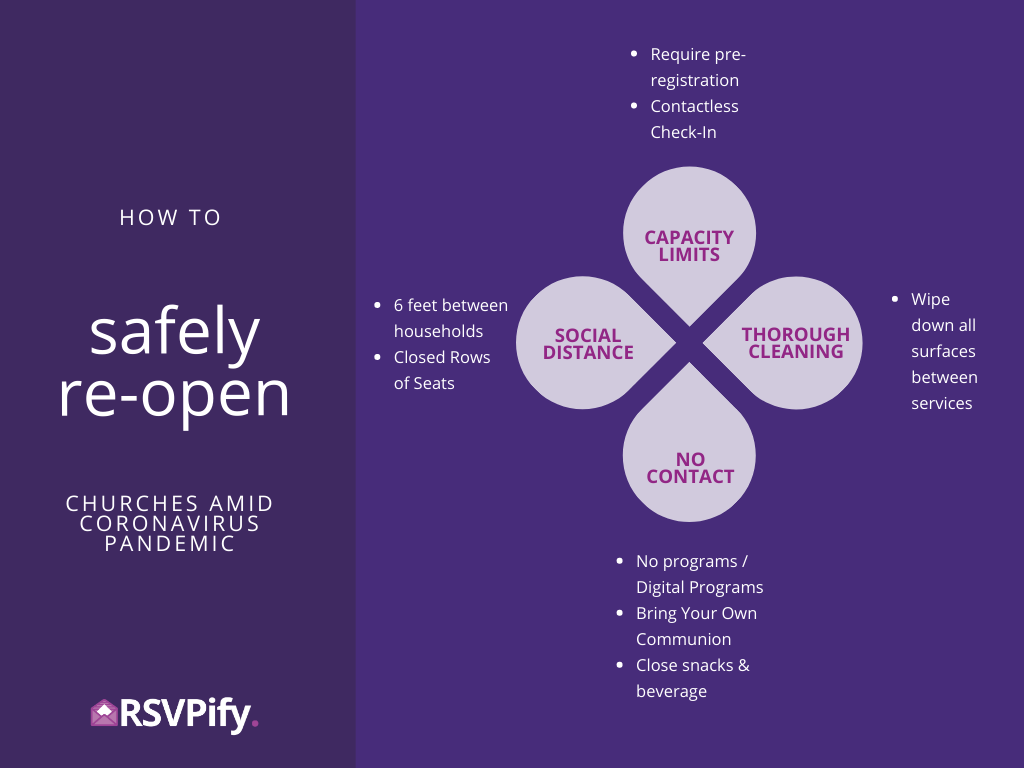21 May

How to safely reopen churches and religious services amid coronavirus pandemic
As the country (and the world) moves to cautiously reopen, many institutions that intrinsically bring people together are looking for guidance on how to do so as safely as possible — in a limited, phased approach. While the U.S. CDC has offered detailed guides and opening + operating protocols for some organizations (e.g. colleges, summer camps, and youth sports organizations), the agency has not yet provided a similar overview for religious organizations. This is potentially problematic given that churches and other religious organizations often have congregations that represent particularly vulnerable populations at risk for serious complications from COVID-19.
While bringing congregants together inherently increases the risk of the transmission of contagions, we spoke with religious leaders about their efforts to re-open as safely as possible. The following highlights some of the problematic variables inherent in reopening and some examples of what other institutions are doing in a bid to mitigate risk in these tricky scenarios.
1. Set strict capacity limits on each service and require congregation members to pre-register for services
At RSVPify, we’ve fielded countless requests from religious leaders who are actively seeking registration systems with capacity limiting features as a means to limit and restrict attendance in compliance with recommended social distancing protocols.
There are many affordable digital church registration platforms that will allow religious institution staff to easily and seamlessly collect RSVPS from congregants. Platforms that allow organizers to set set firm capacity limits that include all family members in the count. Many institutions are choosing to do multiple, cavity-limited sessions. With RSVPify 3, service organizers can add a “capacity reached” message or hide the option entirely once the limit has been reached for a given time slow.
Be sure to make it clear that, while guests are welcome to register and attend, they must register all expected individual attendees in a group as seating will be designed to cluster and separate families (but you can add a question on the form for them to indicate which member(s) invited them to attend!).
Some churches and synagogues are adding additional services (in the case of churches, even some services on Saturdays) given the inherent challenges of adequately spacing attendees in a given venue. Organizers are also being careful to spread services several hours apart to ensure they have time to thoroughly clean & wipe down all services between services.
2. Masks… An unavoidable (yet politically divisive) reality
While masks have become a symbol of the ever-growing political division in the United States, the reality is that facial coverings do serve as a means of helping to reduce the spread of COVID-19. Many recommendations suggest that masks be worn at all times during worship to help prevent the spread of droplets. Expectations regarding mask wearing should be explicitly set ahead of time, and attendees should be asked to certify their anticipated compliance with your organization’s mask policies.
3. Worship: Share your voice, not your droplets
Worship is such a key part of attending religious services, and understandably, church leaders do not want to prohibit their congregation from audible worship (i.e. singing). A combination of mask-wearing and proper distancing precautions may help mitigate the risk of transmission among congregants.
4. Programs, get your programs (online!)
While many legacy institutions (including churches) have resisted the push to fully transition to digital, there’s no better time than now to make the move. In addition to all the normal drawbacks (e.g. waste, cost, etc.), paper is now just another surface for germs. Given that organizers will have the list of attendees for the services ahead of time — along with emails — it’s easy to distribute programs digitally (and also post them to your website for ease of access).
5. Cash donations are a thing of the past, at least for now
For months, religious institutions have been asking members to make their donations and tithes online. In fact, some churches are temporarily suspending ushers to help ensure distancing. Those using pre-registration platforms have the ability to ask congregation members to make their donation as part of the registration process, removing the need to pass around collection trays, and potentially give COVID-19 an additional means of spread.
6. Communion? BYOB!
For many who have been attending services while sheltering in place (either via streaming or watching pre-recorded services), providing your own communion is already the new norm. As such, asking your congregation to supply their own may not be as strange as it might sound — and will allow you to conduct this important segment of the service, while mitigating risk.
7. Snack & beverage ministry is on hiatus
For many congregations, the snacks and beverage offering is a key part of the social and fellowship inherent in attending service. Unfortunately, there’s no easy means of conducting this in a manner that will comply with social distancing measures, and many believe serving food or beverages should be completely avoided at this. Some religious institutions are hosting a BYOB picnic between services and are mapping out where families can set up (i.e. laying blankets down, etc). It’s not a viable alternative for many, but it is a unique option for those now that it’s spring throughout much of the United States.











